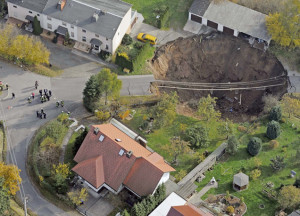You only have once chance to make a good first impression. This applies to meeting new people as well as other situations such as selling your home. That is why it is very important to always put your best foot forward. There is a reason you  are to dress nice during an interview no matter what the job is, being presentable sells better and is more appealing than the alternative. This goes true for when you place your home on the market also. Putting your best foot forward does not mean lying or being deceptive to anyone, there is just an important aspect to show others the full potential of what you are trying to sell. You should take the following tips into consideration before you sell your home, keep in mind after this is all said and done you may change your mind and want to keep the house after all! Either way the home improvements will be well worth it.
are to dress nice during an interview no matter what the job is, being presentable sells better and is more appealing than the alternative. This goes true for when you place your home on the market also. Putting your best foot forward does not mean lying or being deceptive to anyone, there is just an important aspect to show others the full potential of what you are trying to sell. You should take the following tips into consideration before you sell your home, keep in mind after this is all said and done you may change your mind and want to keep the house after all! Either way the home improvements will be well worth it.
1. Maximize Curb Appeal
The best selling aspect of a home is what I like to consider the initial “meet and greet” while you are staring down at the directions and trying to navigate the new unfamiliar neighborhood you pull up to what seems to be your destination. Those feelings you get when you pull up to the curb, confirm the address, shut off your vehicle and look at the house you are considering while briefly comparing it to the neighbor’s houses. This is known in the real estate world as curb appeal. At this point the person looking at the house has already predetermined whether they will consider the rest of the house or just being polite to complete the walk-through. The curb appeal must include everything that can be seen standing in the front yard much like paint, landscaping, lights and fences. Some items that homeowners should also consider would be a clean roof and gutters, a freshly pressure washed drive way and sidewalks along with clean windows and nice blinds. If you are trying to get the highest dollar amount for your home and have neglected your grass, the fence has missing panels and there is a small forest growing out of your gutters I promise you people will notice and move onto the next home or give you a low ball offer. Keep in mind a lot of these items can easily be completed by the average homeowner with not a lot of money……just be ready to sweat a little.
2. Clean, Clean, and Clean Some More!
The next item I would recommend is your attention to the cleanliness of the interior of your house. You have lived in your house for years and cleaned once a week or even more often but are there things you have missed? Cleaning before selling should be extreme cleaning! This should include scrubbing base boards, dusting doors, door frames, light fixtures, fans and vanities, inside drawers and behind furniture (yes even the pieces that haven’t been moved in 10 years). You should be pulling out the washer and dryer to wipe, dust and mop behind them along with polishing and resealing that stainless steel sink in the kitchen. Anything you can clean, polish, scrub and shampoo I would highly recommend doing before putting your home on the market.
3. De-Clutter and Pack Away Everything But The Bare Essentials
Clutter is another big item that many might not even realize because these items have been accumulated over the past several years and have made homes on shelves, drawers and coffee tables. When people tour a home they can understand you are stilling living in the house but they don’t need to see every knick-knack on the mantles, counters and book shelves from the last 20 years. The potential buyer is looking around to see where their big screen TV would fit and how they could make it their home. With this said you need to de-clutter and since you are looking to move I would recommend beginning to pack the clutter in boxes and put it in the attic or even a storage unit. If you keep the bare essentials required to live it will make it much easier for the potential buyer to visualize it as their own. Also there are times when even removing things like large pieces of furniture from living areas or even spare bedrooms that could make a difference on how big or small the spaces look. The extra king size bed in your spare bedroom and 12 piece sectional couch may be nice but if it dwarfs the rooms they are in than your home may not be as appealing as it could be.
These ideas are extrememly beneficial and inexpensive when looking to sell your home. With a little elbow grease and a fresh new look you will give your house a better chance at selling for your asking price. While you are preparing your home to be put on the market make sure and keep up the research on your new potential home with the tools on www.MoversAtlas.com.



